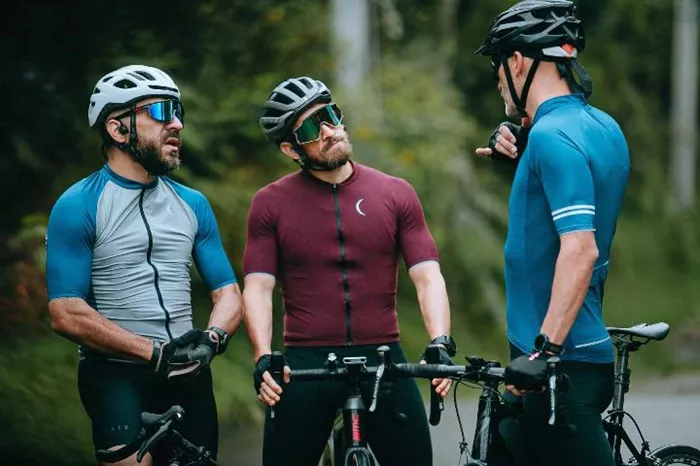Cycling is a fantastic exercise for the heart, lungs, and legs. Many people ride bikes to stay fit, lose weight, or improve endurance. But one common question is whether cycling helps build the upper body. The answer is not simple. Cycling does work some upper body muscles, but it is not the most effective way to build strength or size in the arms, shoulders, and chest.
How Cycling Engages the Upper Body
When you ride a bike, your legs do most of the work. They push the pedals in circles, providing the power to move forward. However, the upper body is not completely inactive. Different types of cycling affect the upper body in different ways.
In road cycling, riders often lean forward, resting their hands on the handlebars. This position requires the arms, shoulders, and core to stabilize the body. The shoulders and triceps help control the bike, especially when riding at high speeds or climbing hills. The core muscles, including the abs and lower back, keep the body balanced.
Mountain biking is more demanding on the upper body. Rough trails, jumps, and sharp turns force the rider to use their arms and shoulders more. Gripping the handlebars tightly, pulling up for jumps, and steering through obstacles engage the biceps, forearms, and upper back. This type of cycling can lead to more muscle development in the upper body compared to road cycling.
BMX and indoor cycling (like Spin classes) also involve the upper body. BMX riders need strong arms and shoulders to handle tricks and jumps. Spin classes often include movements like push-ups on the bike or holding weights while riding, which can add some upper body work.
Why Cycling Alone Is Not Enough for Upper Body Growth
While cycling does use the upper body, it is not enough to build significant muscle. The main reason is resistance. Muscle growth happens when muscles are challenged with heavy loads. Cycling mostly provides endurance training, meaning the muscles work for a long time but without heavy resistance.
For example, holding the handlebars for an hour may tire the arms, but it does not create the same muscle stress as lifting weights. The shoulders and arms act as stabilizers, not primary movers. Without enough resistance, the muscles do not get the signal to grow bigger or stronger.
Another factor is the type of muscle fibers used. Cycling mainly works slow-twitch muscle fibers, which are great for endurance but not for size. Building bigger muscles requires targeting fast-twitch fibers with explosive or heavy movements, like push-ups, pull-ups, or weightlifting.
How to Build Upper Body Strength as a Cyclist
If you love cycling but also want a stronger upper body, you can combine biking with other exercises. Here are some effective ways to do that:
Strength Training
Adding weightlifting or bodyweight exercises to your routine can help. Focus on movements like push-ups, pull-ups, dumbbell presses, and rows. These exercises target the chest, shoulders, back, and arms, creating the resistance needed for muscle growth. Even two or three sessions per week can make a difference.
Adjust Your Cycling Style
If you cannot go to the gym, try changing how you ride. Mountain biking and BMX naturally use the upper body more. On a road bike, you can practice riding out of the saddle (standing up) more often, which engages the core and arms. Indoor cycling classes with upper body movements can also help.
Core Workouts
A strong core improves cycling performance and supports the upper body. Exercises like planks, Russian twists, and leg raises strengthen the abs and lower back, making it easier to maintain good posture on the bike.
Nutrition and Recovery
Muscles need protein and rest to grow. If you want to build upper body strength, eat enough protein from sources like chicken, fish, eggs, or beans. Also, allow time for recovery so your muscles can repair and grow stronger.
The Benefits of a Strong Upper Body for Cyclists
Even though cycling is leg-dominant, having a strong upper body helps in many ways:
- Better Control: Strong arms and shoulders improve bike handling, especially on rough terrain.
- Endurance: A strong core reduces fatigue on long rides by supporting the body.
- Injury Prevention: Balanced muscle strength prevents overuse injuries in the shoulders and back.
- Power Transfer: A stable upper body helps transfer more leg power to the pedals.
Conclusion
Cycling does work the upper body, but not enough to build significant muscle. The arms, shoulders, and core help stabilize the body, but they are not the main focus of the exercise. If you want a stronger upper body, adding strength training, adjusting your riding style, and focusing on core workouts will help. Cycling is great for cardio and leg strength, but a balanced fitness routine includes other exercises for full-body development.
For those who only cycle, the upper body will stay lean and toned but not bulky. If muscle growth is your goal, supplement your rides with weightlifting or bodyweight exercises. The best approach depends on your fitness goals—whether you want to be a better cyclist, build overall strength, or just enjoy riding while staying fit.
No matter what, cycling remains one of the best ways to improve health, boost mood, and explore the outdoors. Just remember that if you want bigger arms or a stronger chest, you’ll need to do more than just pedal.
Related topics:
Does Cycling Build Thigh Muscle?
Does Cycling Help Build Leg Muscles?

